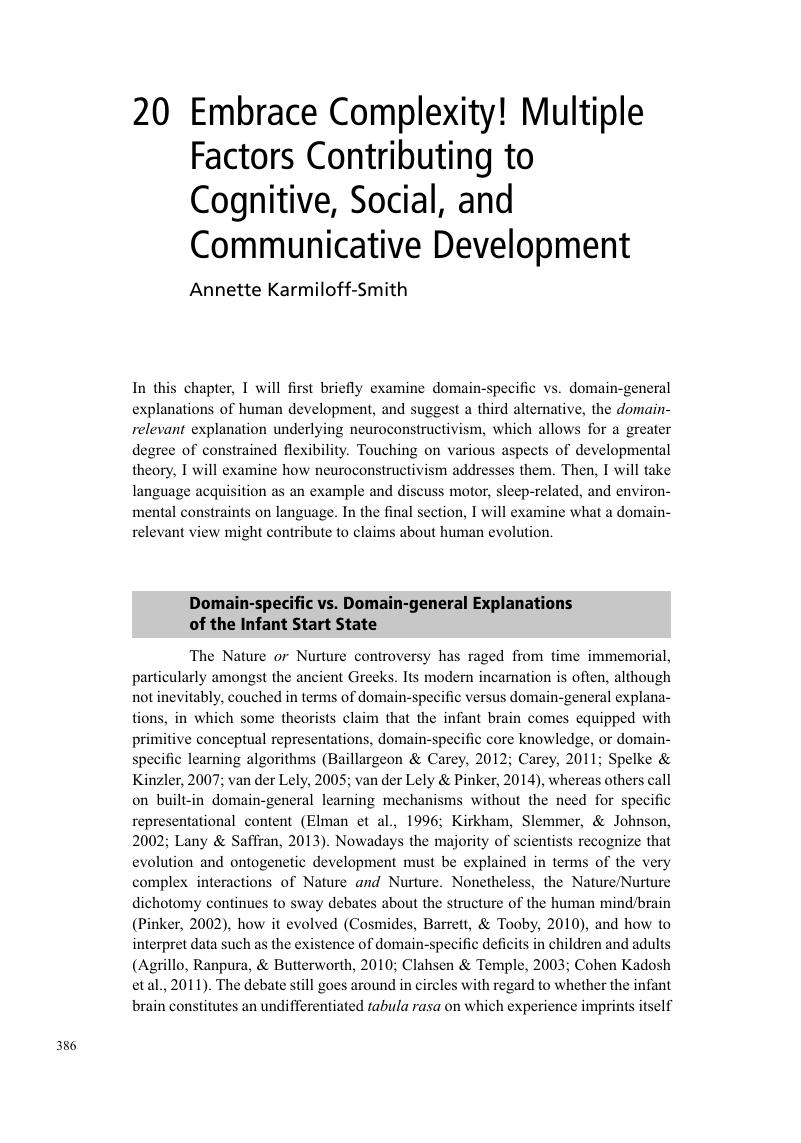Book contents
- New Perspectives on Human Development
- New Perspectives on Human Development
- Copyright page
- Contents
- Figures
- Maps
- Tables
- Contributors
- Preface
- 1 Developmental Processes, Levels of Analysis, and Ways of Knowing: New Perspectives on Human Development
- Part I Cognitive Development
- Part II Social Development
- Part III Language and Communicative Development
- 18 The Evolution of Linguistic Communication: Piagetian Insights
- 19 Intuitive Psychology as Mind Designer: Scaffolding Cognitive Novelties in Early Childhood
- 20 Embrace Complexity! Multiple Factors Contributing to Cognitive, Social, and Communicative Development
- 21 The Cultural Basis of Language and Thought in Development
- 22 Children’s Co-Construction of Sentence and Discourse Structures in Early Childhood: Implications for Development
- 23 Developing with Diversity into the Third Decade of Life and Beyond
- Index
- References
20 - Embrace Complexity! Multiple Factors Contributing to Cognitive, Social, and Communicative Development
from Part III - Language and Communicative Development
Published online by Cambridge University Press: 11 May 2017
- New Perspectives on Human Development
- New Perspectives on Human Development
- Copyright page
- Contents
- Figures
- Maps
- Tables
- Contributors
- Preface
- 1 Developmental Processes, Levels of Analysis, and Ways of Knowing: New Perspectives on Human Development
- Part I Cognitive Development
- Part II Social Development
- Part III Language and Communicative Development
- 18 The Evolution of Linguistic Communication: Piagetian Insights
- 19 Intuitive Psychology as Mind Designer: Scaffolding Cognitive Novelties in Early Childhood
- 20 Embrace Complexity! Multiple Factors Contributing to Cognitive, Social, and Communicative Development
- 21 The Cultural Basis of Language and Thought in Development
- 22 Children’s Co-Construction of Sentence and Discourse Structures in Early Childhood: Implications for Development
- 23 Developing with Diversity into the Third Decade of Life and Beyond
- Index
- References
Summary

- Type
- Chapter
- Information
- New Perspectives on Human Development , pp. 386 - 401Publisher: Cambridge University PressPrint publication year: 2017
References
- 2
- Cited by



